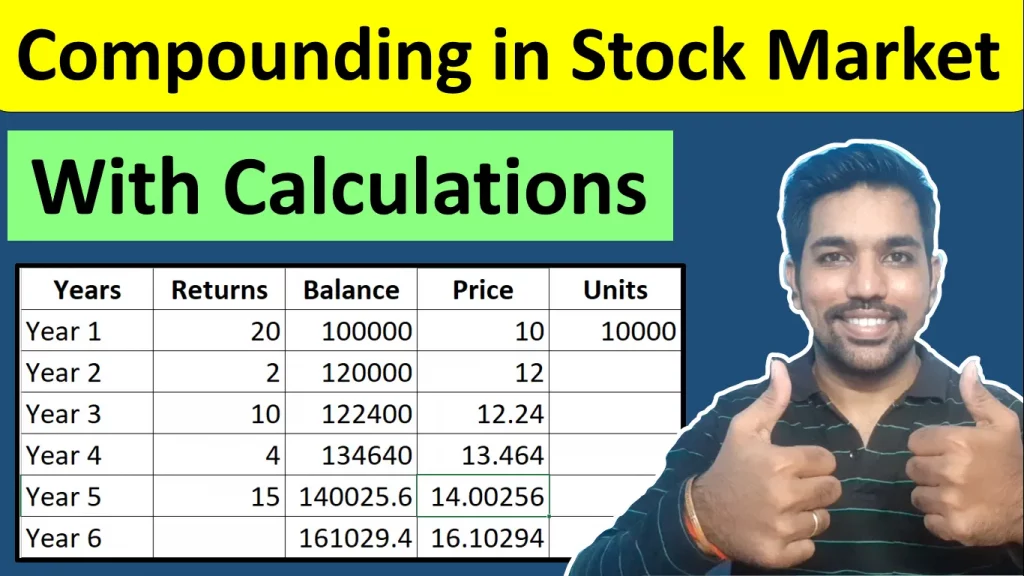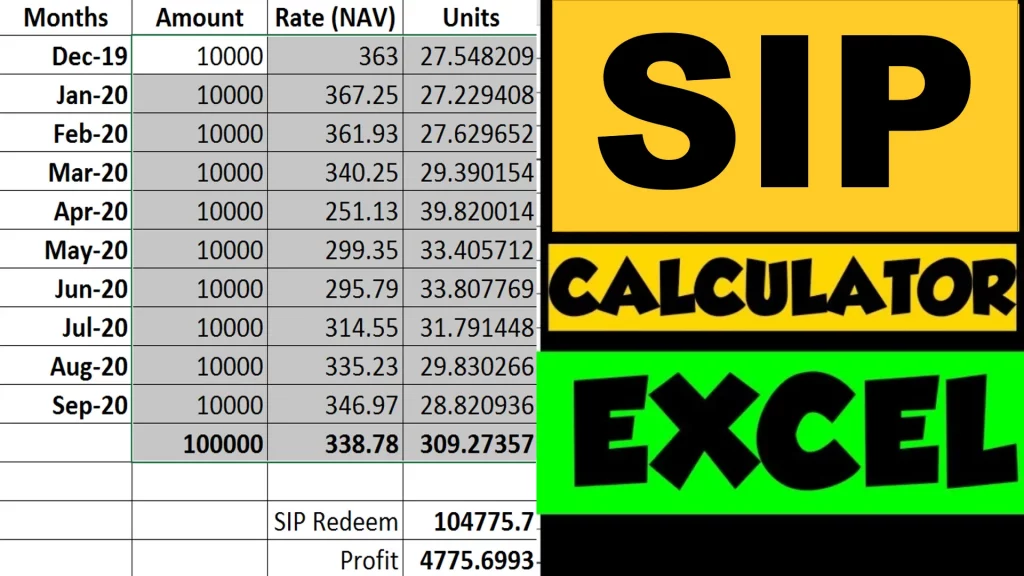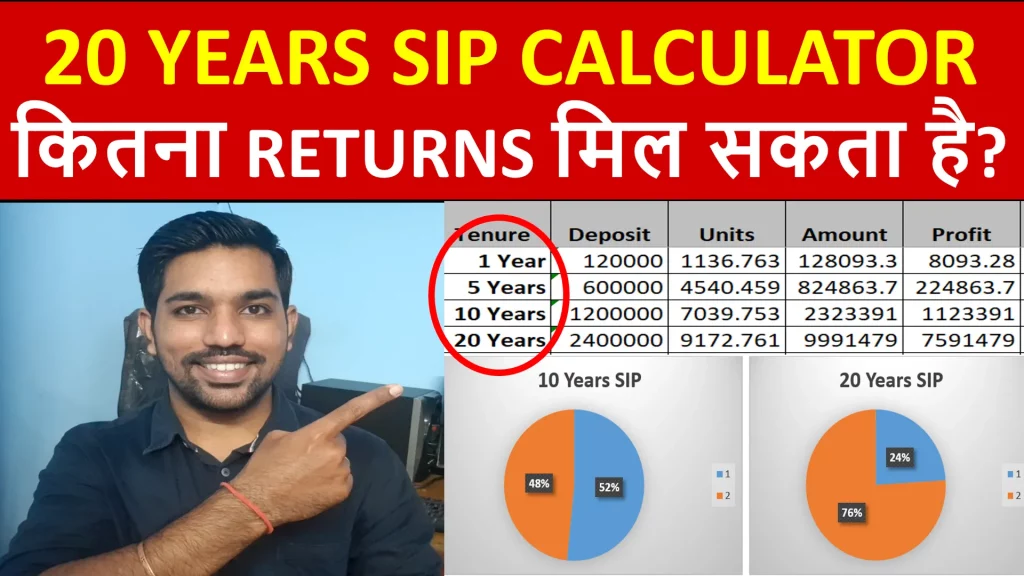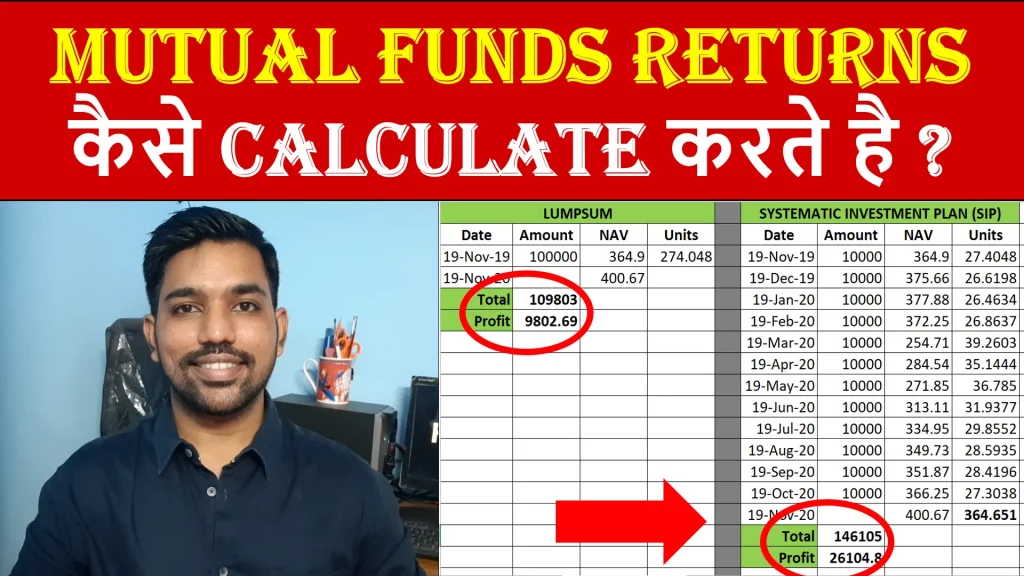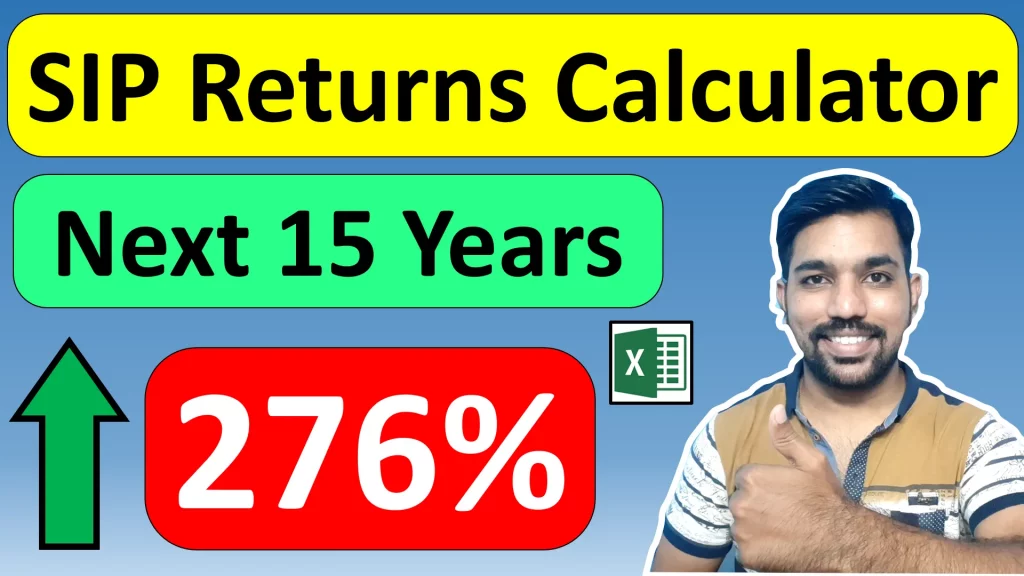How compounding works in stock market? Is it similar to power of compounding in PPF, Fixed Deposits and other saving schemes. What is the power of compounding and it’s benefits? We will answer all these questions in this article.
Power of compounding is very important as it helps us to earn interest on already earned interest. Compounding in stock market will help you to achieve your goals before time. When you buy stocks and hold it for long time, while reinvesting the returns you get, you get compounding effect in stocks, similar to saving schemes such as Public Provident Fund (PPF), Fixed Deposits and other saving schemes.
Compounding in Stock Market Video

Watch more Videos on YouTube Channel
You can see in above video that we have proved how compounding works in stock market.
Let us understand in more details.
What is Compound Interest?
Compounding means getting interest on already earned interest. We get compound interest in schemes such as:
- PPF – 1 year compounding
- FD – Quarterly compounding
- Savings Account – Quarterly compounding
In other saving schemes as well we get compounding benefit which increases the interest amount we might get as a maturity amount. The frequency of compounding is important.
More the frequency of compounding, higher is the interest you will get, as you keep earning interest on already earned interest.
Compound Interest Calculation Example
Let us understand power of compounding with the help of example.
Let’s say you want to deposit Rs. 1,00,000 in a scheme with 5% interest rate per year and annual compounding frequency, for 5 years.
So in the First year your interest will be calculated as follows:
- First Year Compound Interest = 5% * Rs. 1,00,000 / 100 = Rs. 5000
So this Rs. 5000 is the 1 year interest you get on your deposit. Now this interest amount is added to your balance in the second year so that you earn more interest amounts. This is called compounding effect on your deposits.
So your second year interest will be calculated as:
- Second Year Compound Interest = 5% * Rs. 1,05,000 / 100 = Rs. 5250
You get Rs. 5250 as interest in second year, which is Rs. 250 more than the interest in first year (Rs. 5000). This is because we have considered yearly compounding.
Similarly if compounding happens on quarterly basis, the interest amounts will be calculated every quarter.
Below is the table of the interest amounts you get after every year for next 5 years based on above example:

As you can see from above table, you get Rs. 6078 interest in the last year compared to Rs. 5000 interest in the first year. And we only done deposits in the first year. When deposits continue in upcoming years as well (like PPF account), you start getting more interest every year!
Total Interest = Rs. 27,628 after adding all intermediate interest amounts.
ALSO READ: Rs. 1000 FD vs Mutual Funds Which is Better
Simple Interest Calculation Example
Let us now understand how simple interest works.
If we take the same example above of Rs. 1,00,000 deposit with 5% interest rate, tenure 5 years, first year simple interest will be calculated as:
- First Year Simple Interest = 5% * Rs. 1,00,000 / 100 = Rs. 5000
This interest amount is same as the one we calculated in compound interest example above. Let’s see how things change in upcoming years calculation.
For second year, this interest amount of Rs. 5000 is not added back to your balance. So your balance will be still Rs. 1,00,000:
- Second Year Simple Interest = 5% * Rs. 1,00,000 / 100 = Rs. 5000
And again you get the same interest amount for second year and upcoming years.
So in 5 years you will get total of Rs. 25,000 Interest (Rs. 5000 * 5) in simple interest calculation, against Rs. 27,628 that we get in compound interest calculation. This is power of compounding with examples.

Compounding in Stock Market [Calculations]
Let us now understand compounding effect in stock market. Do you get such compounding benefits when you buy stocks?
We need to consider that stock market returns will be fluctuating, se let’s say we invest in a stock with every year returns as – 20%, 2%, 10%, 4%, 15% for 5 years. We need to calculate number of shares bought using the amount of deposits we make.
So let’s say we only deposit Rs. 1,00,000 is first year, considering:
- Price of Stock = Rs. 10
- Invested Amount = Rs. 1,00,000
- Number of Units = Rs. 1,00,000 (Amount) / Rs. 10 (Price) = 10000
So we have bought 10000 in first year.
In second year based on 20% returns, the price will move to Rs. 12, so your investment value will also increase:
Investment Value After First Year
- Investment value = 10000 units * Rs. 12 (price) = Rs. 1,20,000
So you are in Rs. 20,000 profits.
In third year, after 2% increase in returns in second year, your investment value will be:
Investment Value After Second Year
- Investment value = 10000 units * Rs. 12.24 (price) = Rs. 1,22,400
And so on every year the investment value will appreciate.
Note that we have considered positive returns every year. Many times in stock market, you get negative returns also. So we need to consider the returns accordingly and calculate latest investment value.
Calculating in similar way for above mentioned returns in stock every year, we get below values as investment values:

So after the completion of 5 years, our investment value is Rs. 1,61,029.
Now this we are saying that the returns are compounded every year, but we don’t have the proof yet, similar to how we see compounding in PPF or other saving schemes in India.
Let us now take the same returns and calculate interest calculation in PPF. The interest earned at the end of 5 years must match with this amount of Rs. 1,61,029.
Comparing with PPF Interest Calculation
Let us use our PPF Calculator to calculate interest in PPF and see the power of compounding.
We will take the same example as above and us returns for 5 years as – 20%, 2%, 10%, 4%, 15%
First year interest is shown below based on 20% interest rate – matching the returns with the stock in above example:

The end of first year gives us Rs. 1,20,000 as the balance, which matches with the table above with compounding in stock market.
Let us check the interest earned at the end of second year with 2% interest rate:

Again the total balance after second year is Rs. 1,22,400 which is matching with stock market returns.
After the end of 5th year, we get below interest in PPF:

As seen above, we get Rs. 1,61,030 as the total balance which matches with the stock market returns after 5 years. So the compounding effect is true in stock market and hence is proved with returns matching.
ALSO READ: Compounding is Mutual Funds SIP
3 Important points about compounding in Stock Market
There are some important points to know about compounding in stock market as mentioned belo:
- Start Early: It is very important to start early to see good compounding benefits over long term
- Discipline: This is one of the important attributes to accumulate corpus and to retire early.
SIP or systematic investment plan is one of the best ways to achieve discipline, since the amount is debited regularly from your account every month without any manual intervention. - Patience: This is the key over long term financial growth. When markets go down, your patience is tested whether you hold the stocks or mutual funds units or sell them due to fear.
If you retain the units, you’ll see good results over long term, since you are still investing in market via SIP when it is down to get more stocks or mutual funds units.
Conclusion
So yes compounding does happen in stock market. You need to wisely choose the stock you want to invest in and hold it for long term considering various financial ratios as far as fundamental analysis of stock market are concerned.
You can also invest in mutual funds if you don’t want to select individual stocks. Moreover, many Indians don’t have the time to track the stock market news and analyze them before investing, so mutual funds are the way to go ahead.
Some more Reading:
- Taxation on Short Term Capital Gains
- SIP vs Step up SIP Returns for 15 years
- Car Loan in India Explained
Save Home Loan Interest Amount!
Use Home Loan Excel Calculator that will help you to Save Interest Amount on Home Loan EMI.
Click below button to download Home Loan EMI and Prepayment Calculator in Excel:
Watch how Home Loan Calculator in Excel Works
Income Tax Calculator App – FinCalC
For Income Tax Calculation on your mobile device, you can Download my Android App “FinCalC” which I have developed for you to make your income tax calculation easy.
What you can do with this mobile App?
- Calculate Income Tax for FY 2025-26 and previous FY 2024-25
- Enter estimated Investments to check income tax with Old and New Tax Regime
- Save income tax details and track regularly
- Know how much to invest more to save income tax
- More calculators including PPF, SIP returns, Savings account interest and lot more

Use Popular Calculators:
- Income Tax Calculator
- Home Loan EMI Calculator
- SIP Calculator
- PPF Calculator
- HRA Calculator
- Step up SIP Calculator
- Savings Account Interest Calculator
- Lump sum Calculator
- FD Calculator
- RD Calculator
- Car Loan EMI Calculator
- Bike Loan EMI Calculator
- Sukanya Samriddhi Calculator
- Provident Fund Calculator
- Senior Citizen Savings Calculator
- NSC Calculator
- Monthly Income Scheme Calculator
- Mahila Samman Savings Calculator
- Systematic Withdrawal Calculator
- CAGR Calculator
I’d love to hear from you if you have any queries about Personal Finance and Money Management.
JOIN Telegram Group and stay updated with latest Personal Finance News and Topics.
Download our Free Android App – FinCalC to Calculate Income Tax and Interest on various small Saving Schemes in India including PPF, NSC, SIP and lot more.
Follow the Blog and Subscribe to YouTube Channel to stay updated about Personal Finance and Money Management topics.

